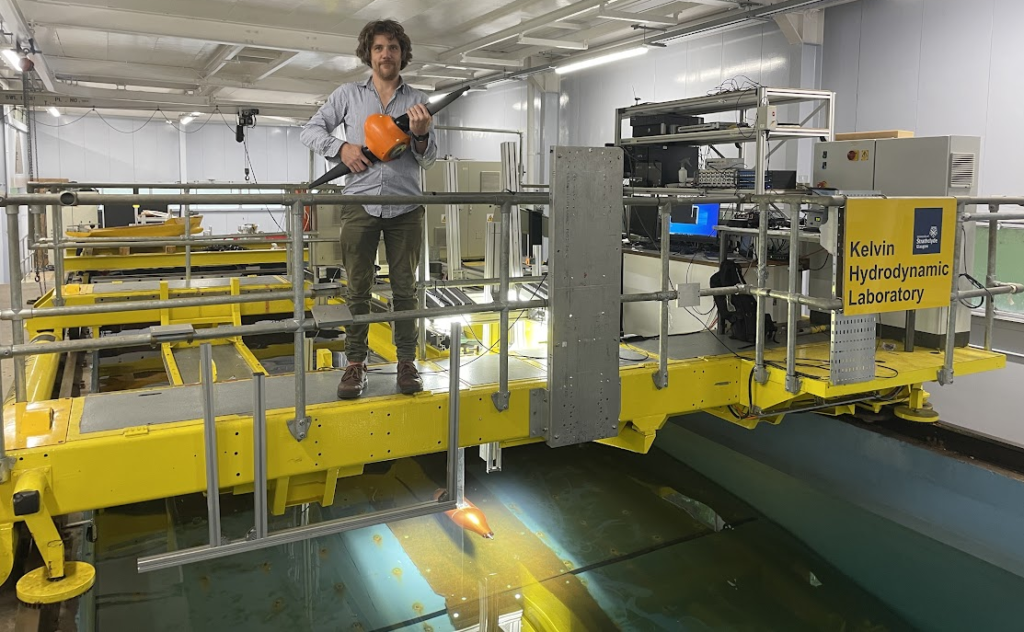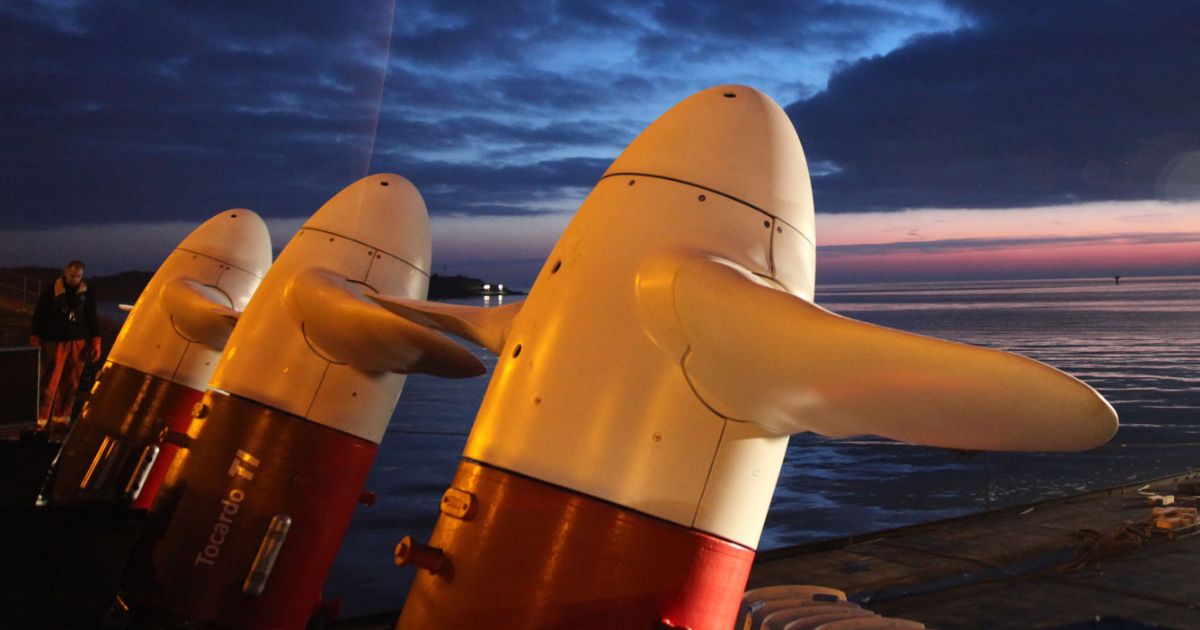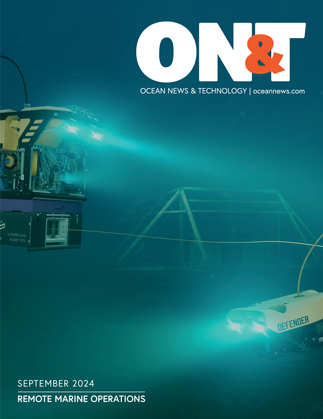The hydrodynamic testing was conducted at the Kelvin Hydrodynamics Laboratory at the University of Strathclyde in Scotland.
Richard Parkinson, CEO of Inyanga Marine Energy Group, said: “These exciting test results mark a major milestone in our mission to deliver low cost, efficient and reliable tidal energy arrays. Our engineering team have excelled in delivering a game-changing turbine and blade solution which doubles annual energy production, making our Morlais 20 MW project highly investable.”
The test results confirm that the cutting-edge blade rotor on HydroWing’s tidal energy device can automatically regulate its own pitch using its innovative, self-adjusting system. This breakthrough validates the HydroWing technology, and it is the culmination of two years of intensive development by HydroWing’s R&D team.

Richard Parkinson explains: “With this new pitch regulation system, the blade rotors can now scale to twice the swept area, whilst ensuring safety and efficiency, even in the harshest ocean conditions. This technology advance unlocks new possibilities for harnessing marine energy at a larger scale and paves the way for future innovations in predictable sustainable power generation. The passive pitch mechanism not only regulates the output of the device but protects the device from adverse conditions such as wave loadings, grid loss and storm surges. Passive pitch has major benefits overactive pitch in terms of reliability, cost and load damping, while also achieving increased energy yield.”
The project has been supported by the IDCORE Programme through which HydroWing have engaged two engineers as part of their EngD thesis.
George Dadd, Lead Turbine Engineer at HydroWing, said: “The tests on the passive pitch technology have behaved exactly as calculated, validating the ‘proof of concept’. We will now continue the validation process with a full-scale test rig.”

